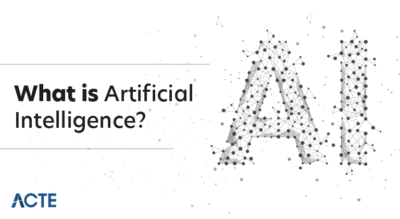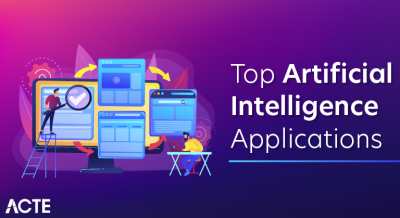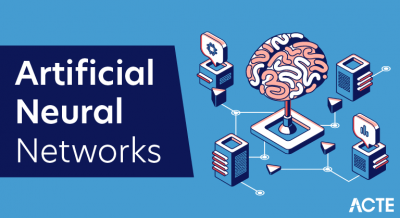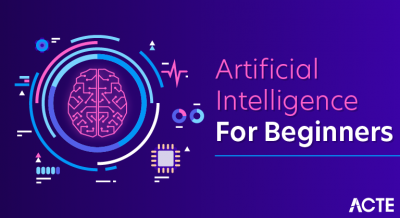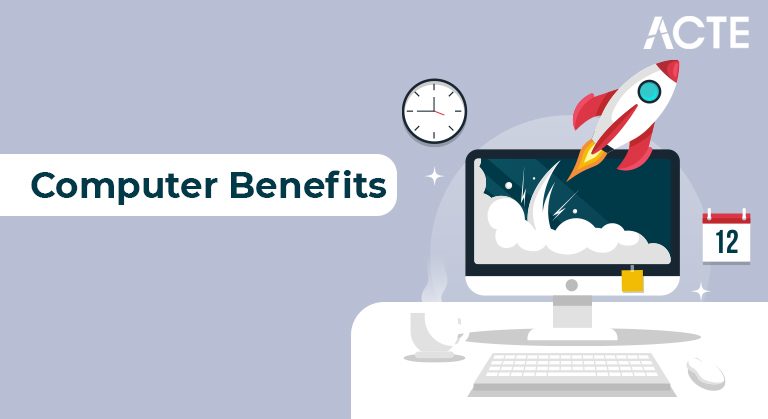
Computer vision uses Artificial Intelligence (AI) to train computers to interpret and understand the visual world. Using digital images from cameras and videos and deep learning models, machines can accurately identify and classify objects — and then react to what they “see”.
- Introduction to Computer Vision
- Where is Computer Vision used?
- How does Computer Vision work?
- Convolutional Neural Networks (CNNs)
- Top Tools used for Computer Vision
- Computer Vision as a Service
- The evolution of computer vision
- Where we can apply computer vision technology
- Computer vision examples
- Conclusion
- Since the beginning of life, human vision has been essential, beautiful and complex. Until a decade ago, machines weren’t able to perceive the visual world as efficiently as we used to.
- Computer vision is an interdisciplinary scientific field that deals with how computers can perceive the visual world in the form of images and videos. From an engineering perspective, it seeks to replicate and automate tasks that can be performed by the human visual system.
- Computer vision uses artificial intelligence (AI) to train computers to interpret and understand the visual world. Using digital images from cameras and video and deep learning models, machines can accurately identify and classify objects – and then react to what they “see”.
- Computer scientists have been trying to give vision to computer vision for half a century, which led to the field of computer vision. The goal is to give computers the ability to extract a high-level understanding of the visual world from digital images and videos. If you’ve used a digital camera or smartphone, you know that computers are already good at capturing images and video in incredible fidelity and detail better than humans.
Introduction to Computer Vision:
Today, many things have changed for the good of computer vision:
1. Mobile technology with HD cameras has provided the world with a vast collection of images and videos.
2. Computing power has grown and has become more easily accessible and more affordable.
3. Specific hardware and tools designed for computer vision are more widely available. We have discussed some of the tools later in this article.
These advances have been beneficial to computer vision. Accuracy rates for object recognition and classification have grown from 50% to 99% over a decade, with the result that today’s computers are more accurate and faster than humans at detecting visual input.
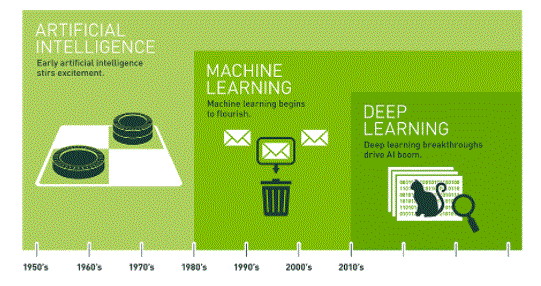
- Computer vision is widely used in healthcare. Medical diagnosis relies heavily on the study of images, scans, and photos. Analysis of ultrasound images, MRIs and CT scans are part of the standard repertoire of modern medicine, and computer vision technologies promise not only to simplify the process but also to prevent false diagnoses and reduce treatment costs. Huh. Computer vision is not intended to replace medical professionals, but to facilitate their work and support them in decision-making. Image segmentation helps in diagnosis by identifying relevant areas on a 2D or 3D scan and colouring them to facilitate the study of black and white images.
- This technology is used in the COVID-19 pandemic. Image segmentation can help clinicians and scientists identify COVID-19 and analyse and quantify the course of infection and disease.
- The trained image recognition algorithm identifies suspicious areas on a CT scan of the lungs. It determines their size and quantity so that the disease of affected patients can be clearly tracked. In monitoring a new disease, computer vision not only makes it easier for physicians to diagnose the condition and monitor it during therapy, but the technology also generates valuable data to study the disease and its course. The data collected, and also the images generated, allowed researchers to spend more time on experiments and tests than on data collection.
- Self-driving cars belong to the use cases in artificial intelligence and have received the most media attention in recent years. This can probably be explained more by the idea of autonomous driving being more futuristic than by the actual consequences of the technology itself. Many machine learning problems are fraught with it, but computer vision is an important core element in their solution. For example, the algorithm (the so-called “agent”) by which the car is controlled must be aware of the car’s environment at all times.
- The agent needs to know how the road moves, where other vehicles are in the vicinity, the distance to potential obstacles and objects, and how fast these objects are moving on the road to adapt to the ever-changing environment. For this purpose, autonomous vehicles are equipped with wide-ranging cameras that film their surroundings over a wide area. The resulting footage is monitored in real time by an image recognition algorithm, which requires that the algorithm be able to find and classify relevant objects not only in still images but in a continuous flow of images.
- This technology exists and is used industrially. The problem with road traffic stems from its complexity, instability and the difficulty of training the algorithm to exclude possible failure of the agent even in complex exceptional circumstances. This highlights the Achilles heel of computer vision: the need for large amounts of training data, the generation of which is associated with high costs in road traffic.
- Online stores like Amazon use the analytics capabilities of their digital platforms to analyse customer behaviour in detail and optimise user experience. The retail industry is also trying to optimise and idealise the experience of its customers. Until now, tools to automatically capture the interactions of people with the displayed items have been missing. Computer vision is now able to bridge this gap for the retail industry.
- In conjunction with existing security cameras, algorithms can automatically evaluate video content and study customer behaviour. For example, the current number of people in the store can be counted at any time, which is a useful application with restrictions on the maximum number of visitors to the store during the COVID-19 pandemic. The ability to track the attention individual shelves and products receive from customers is revolutionary. Specialised algorithms can detect the direction of people’s gaze and thus measure how long an object is seen by passersby.
- With the help of this technology, retailers now have the opportunity to capture online trading and evaluate in detail the behaviour of customers within their stores. This increases sales, reduces the time spent in the store and optimises the distribution of customers within the store.
- Modern technologies enable farmers to cultivate ever larger farms efficiently. This means that these areas should be checked for pests and plant diseases because if ignored, plant diseases can lead to crop loss and crop failure.
- Machine learning is a saviour because huge amounts of data can be generated using drones, satellite images and remote sensors. Modern technology facilitates the collection of various measured values, parameters and data, which can be monitored automatically. Therefore, despite extensive planting over large areas, farmers have round-the-clock observation of soil conditions, irrigation levels, plant health and local temperatures. Machine learning algorithms evaluate this data so that farmers can use this information to react to potential problem areas at an early stage and efficiently distribute available resources.
- The analysis of image material allows the detection of plant diseases at an early stage. A few years ago, plant diseases were often noticed only when they were already capable of spreading. Widespread spread can now be detected and prevented at an early stage using early warning systems based on computer vision, which means less cropping in fields and savings on countermeasures such as pesticides because of the comparative Typically small areas need to be treated.
Where is Computer Vision used?
1. Healthcare
2. Automotive Industry
3. Retail: Tracking Customer Behaviour
4. Agriculture
- Images on computers are often stored as large grids of pixels. Each pixel is defined as a colour, which is stored as a combination of 3 additive primary colours: RGB (red green blue). These are combined in different intensities to represent different colours. Colours are stored inside pixels.
- Let’s consider a simple algorithm for tracking a bright orange football on a football field. For that, we’ll take the RGB value of the middle pixel. By saving that value, we can give an image to a computer program, and ask it to find the pixel with the closest colour match. The algorithm will examine each pixel one at a time, calculating the difference from the target colour. After looking at each pixel, the best match is likely to be the pixel from the orange ball.
- We can run this algorithm for every frame of the video and track the ball over time. But, if one of the teams is wearing an orange jersey, the algorithm can get confused.Therefore, this approach does not work for features larger than a single pixel, such as the edges of objects, which are composed of multiple pixels.
- To identify these features in images, computer vision algorithms have to consider small areas of pixels, called patches. For example, an algorithm that finds vertical edges in a scene, so that the drone can navigate safely through an area of obstacles. For this operation, a mathematical notation is used, which is called a kernel or filter. It contains values for pixel-wise multiplication, the sum of which is saved in the centre pixel.
- Previously, an algorithm called Viola-Jones face detection was used, which combined multiple kernels to detect facial features. Today, the latest and trending algorithms on the block are Convolutional Neural Networks (CNN).
How does Computer Vision work?
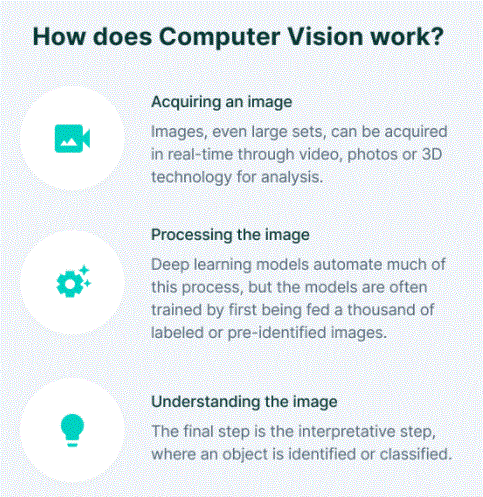
- An artificial neuron is the building block of a neural network. It takes a series of inputs, and multiplies each by a specified weight, then sums those values up as a whole. Input weights are equal to kernel values, but unlike a predefined kernel, neural networks can learn their own useful kernels that are capable of recognizing interesting features in images.
- The CNN uses these banks of neurons to process the image data, each producing a new image, essentially digested by different learned kernels. These outputs are then processed by subsequent layers of neurons, allowing repeated convolutions.
- The first convolutional layer can find things like edges, the next layer can convolve on the features of those edges to recognize simple shapes made of edges, like edges. The next layer can focus on those corner features, and contains neurons that can recognize simple objects such as mouths and eyebrows. This keeps repeating, building in complexity, until there is a layer that makes a determination that recognizes all the features: eyes, ears, mouth, nose, etc., and says “this is a face”.
- Once we have isolated a face, we can apply more specialised computer vision algorithms to indicate landmarks, such as the tip of the nose and the corners of the mouth. It can be used to determine whether the eyes are open or not, the position of the eyebrows, which is handy once you have a landmark. The relative distance between the eyes and the eyebrows can be compared to reveal surprise or delight.
- Similarly, all of this information can be interpreted by emotion recognition algorithms, giving computers the ability to infer basic ‘moods’. This can help the computer become context-sensitive, i.e. aware of its surroundings.
- CNNs don’t need to be several layers deep, but they usually are in order to recognize complex objects and scenes. This technique is considered to be deep learning.
- Recent advances have enabled computers to track and recognize hand gestures as well. What’s exciting, however, is that scientists are just getting started, enabled by advances in computing such as superfast GPUs.
- CNNs are applied to many image recognition tasks beyond faces, such as recognizing handwritten text, detecting tumours in CT scans, and monitoring traffic flow on roads.
Convolutional Neural Networks (CNNs):
Top Tools used for Computer Vision:
Currently, there are various online tools that provide algorithms for computer vision and a platform to execute these algorithms or create new ones. These tools also provide an environment for engaging with various other software and technologies in conjunction with computer vision. So let’s look at some computer vision tools now!
1. OpenCV
OpenCV (Open Source Computer Vision Library) is an open-source computer vision library that contains many different functions for computer vision and machine learning.Created by Intel and originally released in 2000, OpenCV contains many different algorithms related to computer vision that detection and detection, object recognition, monitoring of moving objects, Can perform a variety of tasks, including tracking movements, tracking eye movements. , extracting 3D models of objects, creating an augmented reality overlay with a scene, recognizing similar images in an image database, etc. OpenCV has interfaces for C++, Python, Java, MATLAB etc and supports various operating systems like Windows, Android. , Mac OS, Linux, etc.
2. TensorFlow
TensorFlow is a free open-source platform with a variety of tools, libraries, and resources for artificial intelligence and machine learning, including computer vision. It was created by the Google Brain team and was initially released on November 9, 2015. TensorFlow can be used to build and train machine learning models related to computer vision including recognition, object recognition, etc. Google also released Pixel Visual Core (PVC) in 2017 which is an image, vision and artificial intelligence processor for mobile devices. This Pixel also supports TensorFlow for Visual Core Machine Learning. TensorFlow supports languages. such as Python, C, C++, Java, JavaScript, Go, Swift, etc., but without API backward compatibility guarantees. There are also third-party packages for languages such as MATLAB, C#, Julia, Scala, R, Rust, etc.
3. Matlab
MATLAB is a numerical computing environment developed by MathWorks in 1984. It includes the Computer Vision Toolbox which provides various algorithms and functions for computer vision. These include object detection, object tracking, feature detection, feature matching, camera calibration in 3-D, 3D reconstruction, etc. You can also create and train custom object detectors in MATLAB using machine learning algorithms such as YOLO v2, ACF, Faster R. -CNN, etc. These algorithms can also be run on multicore processors and GPUs to make them very fast. The MATLAB Toolbox algorithm supports code generation in C and C++.
4. Cuddle
CUDA (Compute Unified Device Architecture) is a parallel computing platform created by Nvidia and released in 2007. It is used by software engineers for general purpose processing using a CUDA-enabled graphics processing unit or GPU. CUDA also has the Nvidia Performance Primitives library which contains various functions for image, signal and video processing. Some other libraries and collections include GPU4Vision for popular computer vision algorithms on CUDA, OpenVIDIA, MinGPU which is a minimal GPU library for computer vision, etc. Developers can program in different languages like C, C++, Fortran, MATLAB, Python, etc. Using CUDA.
5. Simple CV
SimpleCV is an open-source computer vision framework that can be used to build various computer vision applications. SimpleCV is simple (as the name suggests!) and you can use various advanced computer vision libraries like OpenCV without having to deeply learn all CV concepts like file formats, buffer management, colour space, eigenvalues, bit depth, matrix storage, bitmap storage, etc. SimpleCV allows you to use images or video streams from webcams, FireWire, mobile phones, Kinects, etc. to be used in computer vision. This is the best framework if you need to do some quick prototyping. You can use SimpleCV with Mac, Windows and Ubuntu Linux operating systems.
6. GPU Image
GPUImage is a framework or rather, an iOS library that allows you to apply GPU-accelerated effects and filters to images, live motion videos and movies. It is built on OpenGL ES 2.0. Running custom filters on the GPU requires a lot of code to be set up and maintained. GPUImage cuts down on all that boilerplate and gets the job done for you.
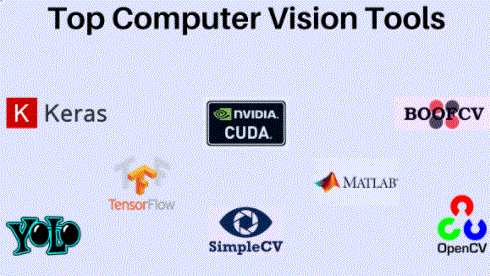
Computer Vision as a Service:
1. Microsoft Azure
Microsoft APIs allow you to analyse images, read text in them, and analyse video in near-real time. You can also flag adult content, create thumbnails of images, and recognize handwriting.
2. Google Cloud and Mobile Vision API
The Google Cloud Vision API enables developers to perform image processing by encapsulating powerful machine learning models in a simple REST API that can be invoked in an application. In addition, its Optical Character Recognition (OCR) functionality enables you to detect text in your images.
The Mobile Vision API lets you detect objects in photos and videos using real-time on-device vision technology. It also lets you scan and recognize barcodes and text.
3. Amazon Recognition
Amazon Rekognition is a deep learning-based image and video analysis service that makes adding an image and video analysis to your applications a piece of cake. The Service can identify objects, text, people, scenes and activities, and it also detects inappropriate content, in addition to providing validation for highly accurate analysis and sentiment analysis can.
The evolution of computer vision:
Computer vision is not a new technology; The first experiments with computer vision began in the 1950s, and after that, it was used to typewrite and interpret handwritten text. At the time, computer vision analysis procedures were relatively simple, but required a lot of work from human operators, who had to manually provide data samples for analysis. As you probably guessed, it was hard to provide a lot of data when doing it manually. Also, the computational power was not good enough, so the error margin was too high for this analysis.
Today we have no shortage of computer power. Cloud computing, coupled with robust algorithms, can help us solve even the most complex problems. But not only is new hardware paired with sophisticated algorithms (we’ll review them in the next section) advancing computer vision technology; The impressive amount of publicly available visual data that we generate every day is attributable to the recent process of this technology. According to Forbes, users share more than three billion images online every day, and this data is used to train computer vision systems.
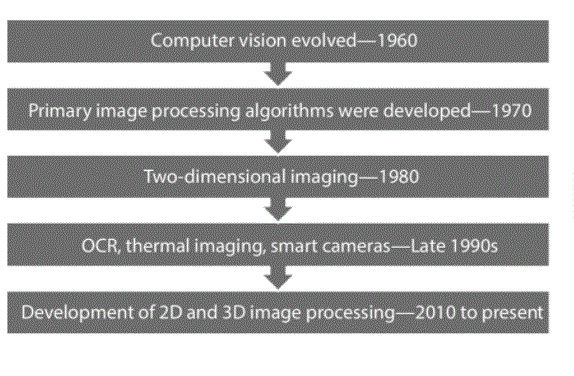
Where we can apply computer vision technology:
Some people think that computer vision is something from the distant future of design. not true. Computer vision is already integrated into many areas of our lives. Below are some notable examples of how we use this technology today:
Material organisation
Computer vision systems already help us organise our content. Apple Photos is a classic example. The app has access to our photo collection, and it automatically adds tags to photos and allows us to browse through a more structured collection of photos. What makes Apple Photos great is that the app creates a curated view of your best moments for you.
Recognition
Recognition technology is used to match pictures of people’s faces to their identities. This technology is integrated into the core products we use every day. For example, Facebook is using computer vision to identify people in photos.
Augmented reality
Computer vision is a core element of augmented reality apps. This technology helps AR apps detect physical objects (both surfaces and individual objects within a given physical space) in real time and use this information to place virtual objects in a physical environment.
- Image classification sees an image and can classify it (a dog, an apple, a person’s face). More precisely, it is able to predict accurately whether a given image belongs to a certain class. For example, a social media company may want to use this to automatically identify and isolate offensive images uploaded by users.
- Object detection can use image classification to identify a certain class of image and then detect and tabulate their presence in an image or video. Examples include detecting damage on the assembly line or identifying machinery in need of maintenance.
- Object tracking follows or tracks an object after it has been detected. This task is often performed in sequence or with images captured in a real-time video feed. Autonomous vehicles, for example, not only need to classify and locate objects such as pedestrians, other cars and road infrastructure, they also need to track them in motion to avoid collisions and comply with traffic laws.
- Content-based image retrieval uses computer vision to browse, search, and retrieve images from large data stores, based on the content of the images, rather than the metadata tags associated with them. This task can involve automatic image annotation that replaces manual image tagging. These functions can be used for digital asset management systems and can increase the accuracy of search and retrieve.
Computer vision examples:
Many organisations do not have the resources to fund computer vision labs and build deep learning models and neural networks. They may also lack the computing power needed to process the vast set of visual data. Companies like IBM are helping by offering computer vision software development services. These services provide pre-built learning models available from the cloud – and also reduce the demand for computing resources. Users connect to services through an application programming interface (API) and use them to develop computer vision applications.
IBM has also introduced a computer vision platform that addresses both developmental and computing resource concerns. IBM Maximo Visual Inspection includes tools that enable subject matter experts to label, train and deploy deep learning vision models – without coding or deep learning expertise. Vision models can be deployed in local data centres, cloud and edge devices. While it’s getting easier to get the resources to develop computer vision applications, an important question has to be answered quickly: What will these applications actually do? Understanding and defining specific computer vision tasks can help focus and validate projects and applications and make it easier to get started.
Here are some examples of installed computer vision tasks:
Conclusion:
Computer vision is a popular topic in articles about new technology. There is a different way of using the data which makes this technology different. The vast amounts of data we create every day, which some consider a curse to our generation, are actually used to our advantage—data can teach computers to see and understand objects. This technology also represents an important step that our civilization is taking towards creating artificial intelligence that will be as sophisticated as humans.

